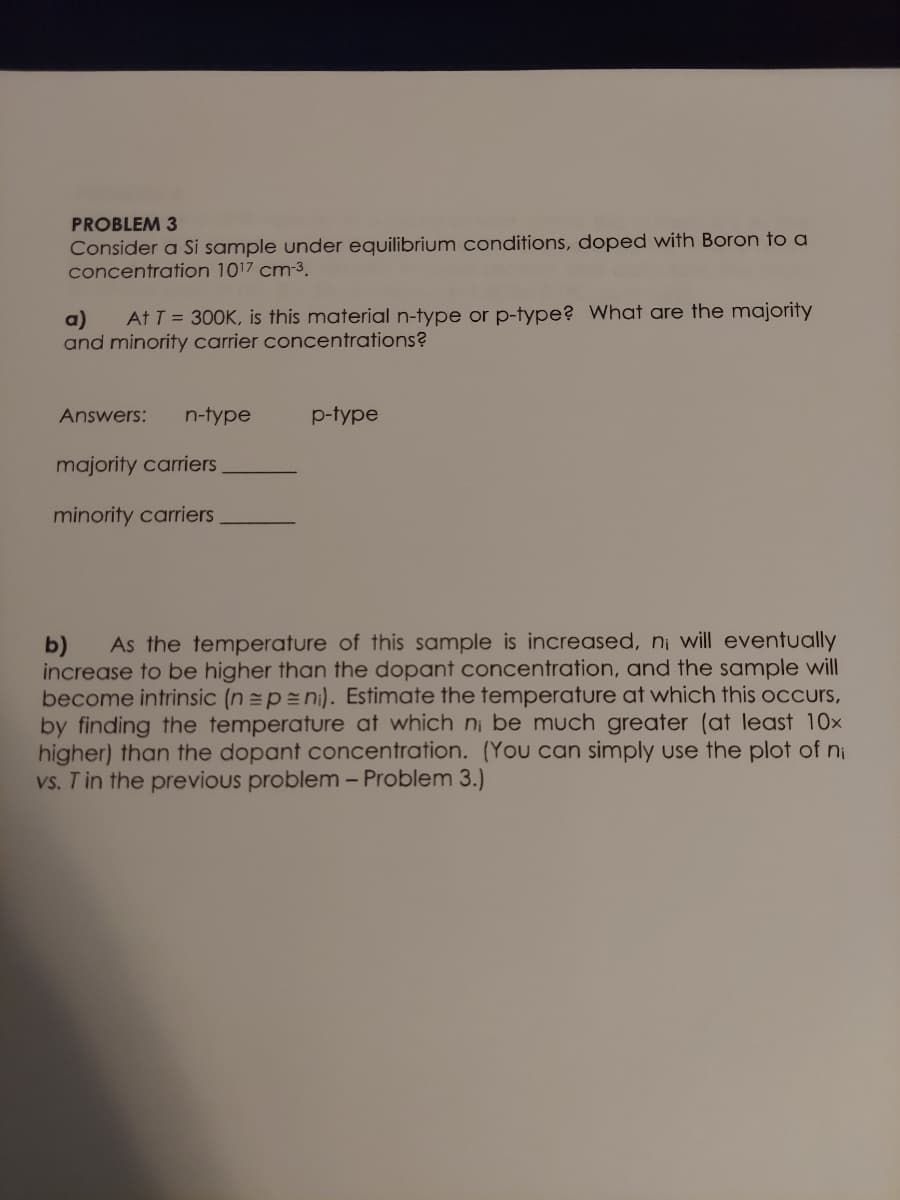PROBLEM 3 Consider a Si sample under equilibrium conditions, doped with Boron to a concentration 1017 cm-3. At T = 300K, is this material n-type or p-type? What are the majority a) and minority carrier concentrations? Answers: n-type p-type majority carriers minority carriers As the temperature of this sample is increased, ni will eventually b) increase to be higher than the dopant concentration, and the sample will become intrinsic (n =p=ni). Estimate the temperature at which this oCcurs, by finding the temperature at which ni be much greater (at least 10x higher) than the dopant concentration. (You can simply use the plot of ni vs. T in the previous problem - Problem 3.)
PROBLEM 3 Consider a Si sample under equilibrium conditions, doped with Boron to a concentration 1017 cm-3. At T = 300K, is this material n-type or p-type? What are the majority a) and minority carrier concentrations? Answers: n-type p-type majority carriers minority carriers As the temperature of this sample is increased, ni will eventually b) increase to be higher than the dopant concentration, and the sample will become intrinsic (n =p=ni). Estimate the temperature at which this oCcurs, by finding the temperature at which ni be much greater (at least 10x higher) than the dopant concentration. (You can simply use the plot of ni vs. T in the previous problem - Problem 3.)
Chapter9: Aqueous Solutions And Chemical Equilibria
Section: Chapter Questions
Problem 9.32QAP
Related questions
Question

Transcribed Image Text:PROBLEM 3
Consider a Si sample under equilibrium conditions, doped with Boron to a
concentration 1017 cm-3.
At T = 300K, is this material n-type or p-type? What are the majority
a)
and minority carrier concentrations?
Answers:
n-type
p-type
majority carriers
minority carriers
As the temperature of this sample is increased, ni will eventually
b)
increase to be higher than the dopant concentration, and the sample will
become intrinsic (n =p=ni). Estimate the temperature at which this ocCcurs,
by finding the temperature at which ni be much greater (at least 10x
higher) than the dopant concentration. (You can simply use the plot of ni
vs. T in the previous problem - Problem 3.)
Expert Solution
This question has been solved!
Explore an expertly crafted, step-by-step solution for a thorough understanding of key concepts.
This is a popular solution!
Trending now
This is a popular solution!
Step by step
Solved in 2 steps with 2 images

Knowledge Booster
Learn more about
Need a deep-dive on the concept behind this application? Look no further. Learn more about this topic, chemistry and related others by exploring similar questions and additional content below.Recommended textbooks for you

